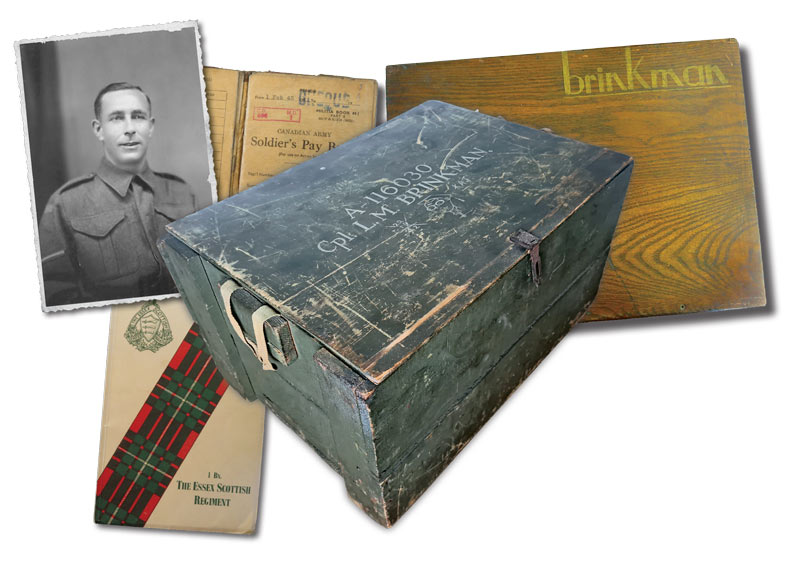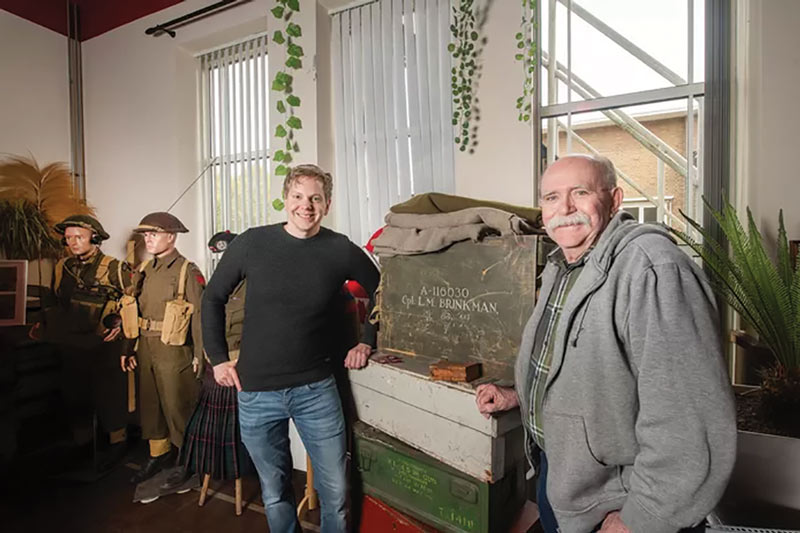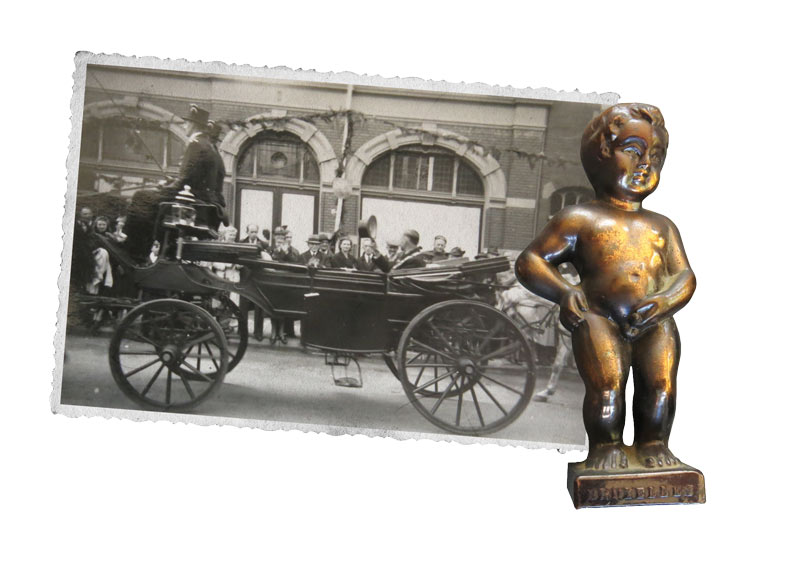

In 2018, Martijn van Essen finally had an answer to the source of the Second World War relics in his grandfather’s attic.
It had been a decades-long quest to find out more about the artifacts that had hung over his head since the age of 14 in Apeldoorn, Netherlands. There were ammunition boxes and blankets, but nothing as intriguing to van Essen and his grandfather, Herman, as the 69 centimetre by 47 centimetre olive-green chest, or footlocker, with the hand-painted name “Cpl. L.M. Brinkman” on it.
For years, the pair had worked to identify Brinkman, interviewing local WW II survivors, only to find one dead end after another. Following Herman’s death in 2009, however, van Essen finally had an “Aha” moment.
Friends scouring service records from Library and Archives Canada for van Essen had learned who the chest’s owner was: Lawrence Milton Brinkman, a Canadian corporal with the Essex Scottish Regiment who helped liberate the Netherlands from Nazi Germany.
“I was excited to learn about the stories he left behind,” said van Essen.
On April 12, 1945, the Canadians launched Operation Cannonshot, and the 1st Canadian Infantry Division was tasked with crossing the IJssel River to free parts of northern and western Netherlands. Pushing westward, Apeldoorn was liberated five days later. Herman, then a young boy, witnessed frequent firefights, aerial bombings and the work of Canadian soldiers who were quartered at his home. The Canadians befriended Herman, giving him chocolate, teaching him how to smoke and, of course, leaving behind such historical treasures.

“I was excited to learn about the stories he left behind.”
—Martijn van Essen
“My grandfather was proud of the footlocker,” said van Essen.
Born on May 6, 1907, Brinkman worked at the Ford Motor Company in Windsor, Ont., until volunteering to join the miliary in September 1942. First assigned to the Royal Canadian Ordnance Corps, Brinkman soon transferred to the Essex Scottish Regiment, a Canadian militia unit which had suffered significant losses in the Dieppe Raid. Promoted to corporal, Brinkman was appointed to the regiment’s educational section as an assistant, receiving numerous awards for his wartime contributions.

After contacting Brinkman’s children Lynne and Barry in 2022 via ancestry.ca, van Essen learned even more about the footlocker, including the items it once held. While the chest contained common items such as photos, money, a pay/service record book and European souvenirs, it also included such uniquely Apeldoornian mementoes as a picture of the wartime mayor, postcards of the city and a box from a local jewelry store.

Video calls and emails between van Essen and Brinkman’s children eventually turned into an in-person visit in the spring of 2023, liberation season in the Netherlands. Barry Brinkman arrived to an appreciative welcome in Apeldoorn.
Meeting Barry, van Essen finally felt like he understood who Brinkman might have been as a person. “Maybe by getting to know Barry, I could imagine how Lawrence was—a nice, funny guy.”
Advertisement












